人类公平的发展基础
公平是维持人类社会大规模群体合作的重要因素。很多行为实验和脑科学证据表明人类公平行为从儿童时期就开始形成了。研究人类公平的形成过程和形成原因是理解人类社会复杂性的重要方式。McAuliffe等人从儿童发展角度对人类公平行为的发展和产生问题进行了研究综述,于2017年2月份发表在《Nature Human Behaviour》上。在文章中,首先讨论了公平的四种模式,分别是:disadvantageous inequality aversion,Second-party punishment of unfairness,Third-party punishment of unfairness,Advantageous inequity aversion,其中后三种公平模式是人类所特有的(见图1),接着从发展的角度讨论了这些公平模式在人类儿童时期出现的先后顺序(见图2),在脑机制方面,综述了跟公平有关的脑区(见图3),最后,从大脑发育角度给出了儿童出现不同公平模式的原因(见图4)。
McAuliffe K, Blake P R, Steinbeis N, et al. The developmental foundations of human fairness[J]. Nature Human Behaviour, 2017, 1: 0042.
Abstract: New behavioural and neuroscientific evidence on the development of fairness behaviours demonstrates that the signatures of human fairness can be traced into childhood. Children make sacrifices for fairness (1) when they have less than others, (2) when others have been unfair and (3) when they have more than others. The latter two responses mark a critical departure from what is observed in other species because they enable fairness to be upheld even when doing so goes against self-interest. This new work can be fruitfully combined with insights from cognitive neuroscience to understand the mechanisms of developmental change.
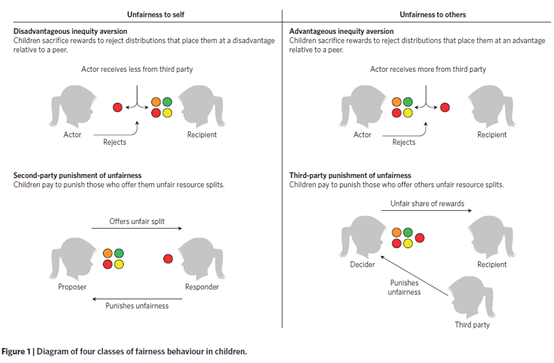
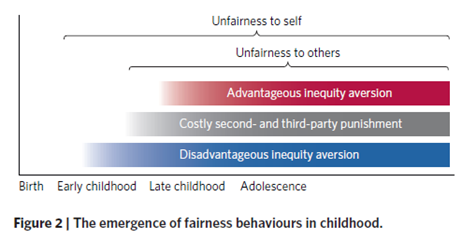
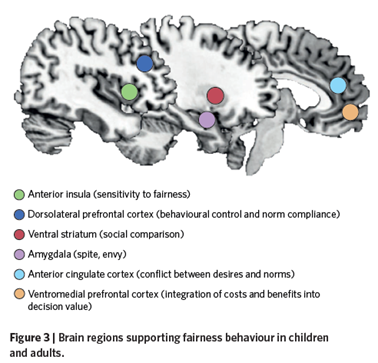
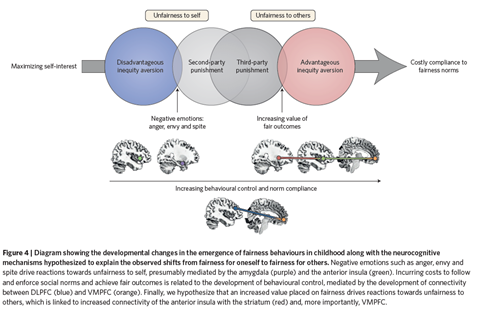
研究公平行为常用的博弈模型
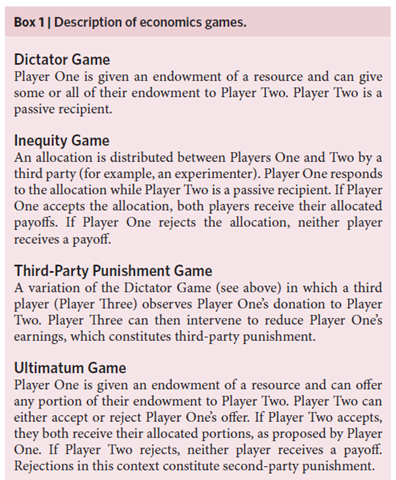
原文链接:https://www.nature.com/articles/s41562-016-0042?error=cookies_not_supported


